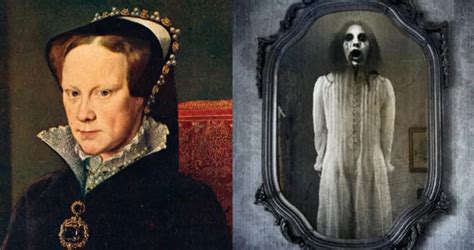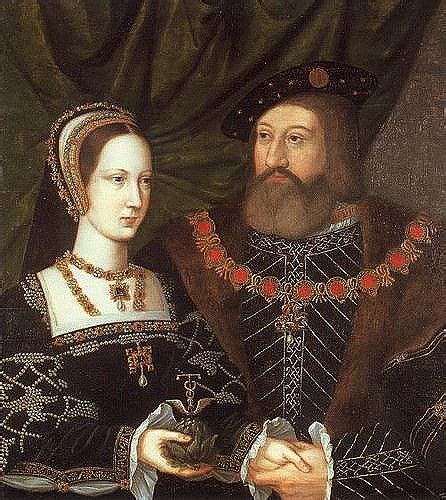mary tudor religion | bloody mary queen death mary tudor religion During her turbulent life, Mary I became the first ruling queen of England and attempted to restore the Catholic faith. But was she really known as 'Bloody Mary'? Find out more about the facts . Improper installation may cause water leakage, electrical shock, fire, or equipment damage. • Install the air conditioner according to the instructions given in this manual. Incomplete installation may cause water leakage, electrical shock, fire or equipment damage. • Be sure to use the supplied or exact specified installation parts.
0 · why is bloody mary called
1 · who was mary tudor's husband
2 · mary 1 husband
3 · king henry's daughter mary
4 · king henry viii daughter mary
5 · catherine of aragon daughter mary
6 · bloody mary queen death
7 · bloody mary henry's daughter
DADA LIFE - Live at Electric Daisy Carnival Las Vegas 2012!! Last set of the festival, they played til sunrise! This was on the "Kinetic Field" - EDC's.
One of Mary's first actions as queen was to order the release of the Roman Catholic Thomas Howard, 3rd Duke of Norfolk, and Stephen Gardiner from imprisonment in the Tower of London, as well as her kinsman Edward Courtenay. Mary understood that the young Lady Jane was essentially a pawn in Northumberland's scheme, and Northumberland was the only conspirator of r.Mary’s willingness to be involved in the translation of Erasmus’ Paraphrases in 1544 suggests that she was not so conservative in religion as to object to all reformation of the Church, a position .
During her turbulent life, Mary I became the first ruling queen of England and attempted to restore the Catholic faith. But was she really known as 'Bloody Mary'? Find out more about the facts . She prioritized religion, implementing reforms and restrictions aimed at restoring the Catholic Church’s ascendancy in England. Most controversially, she ordered around 280 .
Mary I (1516-1558) was the only surviving child of Henry VIII and Catherine of Aragon. She tried to restore England to the Catholic Church and persecuted Protestants, earning her the nickname "Bloody Mary". The eldest daughter of Henry VIII of England (r. 1509-1547 CE) with Catherine of Aragon (1485-1536 CE), she restored Catholicism in England while her persecution of Protestants led to her nickname 'Bloody Mary'. Mary's . The re-Catholicisation of England under Mary Tudor has traditionally been perceived as an abject failure, a mere hiccup in the nation's triumphant – and inevitable . Mary heavily relied on her Catholic faith to emotionally get her through that critical time. During this time, Mary publicly refused to recognize her father’s marriage to Anne, her own legalized illegitimacy and his claim to be .
MARY TUDOR, QUEEN OF ENGLAND Reigned, July 6, 1553, to Nov. 17, 1558; b. Feb. 18, 1516; d. Nov. 17, 1558. She was the only surviving child of henry viii and catherine of aragon. Henry had hoped for a son who would perpetuate the fledgling Tudor dynasty. Although disappointed, he was sanguine. "We are both young," he told the Venetian ambassador, Giustinian.
Mary Tudor's legacy was further tainted by the loss of Calais - England's last lands in Europe - to the French during her reign. Mary's reputation has become defined by her religious persecutions, yet this is partly as a result of later .
Mary was informed that some of her servants were involved in both uprisings, the implication being that she was complicit. This was a charge she hotly denied and no evidence was brought against her. Protected by the Emperor, Mary became far more ostentatious in her religion than previously, hearing Mass more frequently and with more ceremony. Mary Tudor was born on February 18, 1516, at the Palace of Placentia. She was the daughter of King Henry VIII and his first wife, Catherine of Aragon. Mary was a devout Catholic and spent much of her early life in the care of her grandmother, Margaret Beaufort. She was invested as Princess of Wales in 1525.Meanwhile the restoration of the old religion went on vigorously. The altars were set up again, the married clergy were deprived, High Mass was sung at St. Paul's, and new bishops were consecrated according to the ancient ritual. In Mary's second Parliament the title of supreme head was formally abrogated, and an attempt was made to re-enact the statutes against heresy, but . Marie Ire régna en tant que reine de 1553 à 1558. Fille aînée d'Henri VIII d'Angleterre (r. 1509-1547) et de Catherine d'Aragon (1485-1536), elle rétablit le catholicisme en Angleterre, tandis que sa persécution des protestants lui valut le surnom de "Bloody Mary" ou "Marie la sanglante". Le mariage de Marie avec Philippe d'Espagne catholique dressa son .
Mary Tudor 1553-1558 . with peoples' feelings about Religion and the Papacy. All the anti-papal laws . passed by Henry VIII were repealed. The Pope was made Head of the Church in England. Mary’s Persecution of the Protestants 1555-1558. Mary ."Mary Tudor and the Re-Catholicisation" History Today, November 1994. In her article, Loach attempts to prove that the reintroduction of Roman Catholicism during Mary's reign has been wrongly perceived as a failure by most historians. . This book is helpful in that it shows just how much religion effects the policies and practices of a .Calendar of State Papers Foreign, Mary - 1553-1558; Calendar of State Papers Domestic: Edward, Mary and Elizabeth, 1547-80 - You need to pay for access to this.; Acts of the Privy Council of England volume 4 - 1552-1554 Ask the Chatbot a Question Ask the Chatbot a Question Mary Tudor (born March 1495/96—died June 24, 1533, Westhorpe, Suffolk, Eng.) was an English princess, the third wife of King Louis XII of France; she was the sister of England’s King Henry VIII (ruled 1509–47) and the grandmother of Lady Jane Grey, who was titular queen of England for nine days in 1553.
Tudors: Religion The Tudor era witnessed the most sweeping religious changes in England since the arrival of Christianity, which affected every aspect of national life. . Under Mary, these were renewed or replaced by royal command, only to be removed again when the Protestant Elizabeth I succeeded in 1558. The Tudor Dynasty of England, spanning from the late fifteenth century into the early seventeenth century, was filled with many colorful monarchs who impacted the country politically, economically, and socially. One of those monarchs was Mary Tudor, the daughter of King Henry VIII and his first wife, Catherine of Aragon. Mary ruled over England from July 1553 . Mary I became England's first female monarch in 1553. She was known as Bloody Mary for burning nearly 300 Protestants at the stake during her short reign. . Mary I: Early Life . Mary Tudor was .

Read the essential details about Queen Mary Tudor that includes images, quotations and the main facts of her life. GCSE History. Henry VIII. Anne Boleyn. Jane Seymour. Lady Jane Grey. England 1485 1558: the Early Tudors (A/S) England 1547 1603: the Later Tudors (A/2)Mary I (born February 18, 1516, Greenwich, near London, England—died November 17, 1558, London) was the first queen to rule England (1553–58) in her own right. She was known as Bloody Mary for her persecution of Protestants in a vain .Mary I (18 February 1516 – 17 November 1558), also known as Mary Tudor, and as "Bloody Mary" by her Protestant opponents, was Queen of England and Ireland from July 1553 and Queen of Spain and the Habsburg dominions as the wife of King Philip II .
Mary Tudor was the first queen regnant of England, reigning from 1553 until her death in 1558. She is best known for her religious persecutions of Protestants and the executions of over 300.Mary’s willingness to be involved in the translation of Erasmus’ Paraphrases in 1544 suggests that she was not so conservative in religion as to object to all reformation of the Church, a position borne out by the later concentration on a rejuvenated approach to .
why is bloody mary called
who was mary tudor's husband
During her turbulent life, Mary I became the first ruling queen of England and attempted to restore the Catholic faith. But was she really known as 'Bloody Mary'? Find out more about the facts and myths surrounding her reign. Queen Mary I after Anthonis Mor (Antonio Moro) © National Portrait Gallery, London.
She prioritized religion, implementing reforms and restrictions aimed at restoring the Catholic Church’s ascendancy in England. Most controversially, she ordered around 280 Protestants burned at. Mary I became England's first female monarch in 1553. She was known as Bloody Mary for burning nearly 300 Protestants at the stake during her short reign.

mary 1 husband
The eldest daughter of Henry VIII of England (r. 1509-1547 CE) with Catherine of Aragon (1485-1536 CE), she restored Catholicism in England while her persecution of Protestants led to her nickname 'Bloody Mary'. Mary's marriage to Philip of Catholic Spain set her own kingdom against her.
king henry's daughter mary
The re-Catholicisation of England under Mary Tudor has traditionally been perceived as an abject failure, a mere hiccup in the nation's triumphant – and inevitable progress towards 'true religion', that is, Protestantism.
king henry viii daughter mary

Izsaukt tehniskā servisa speciālistu var arī pa tālruni 8899 vai rakstot uz [email protected]
mary tudor religion|bloody mary queen death

























